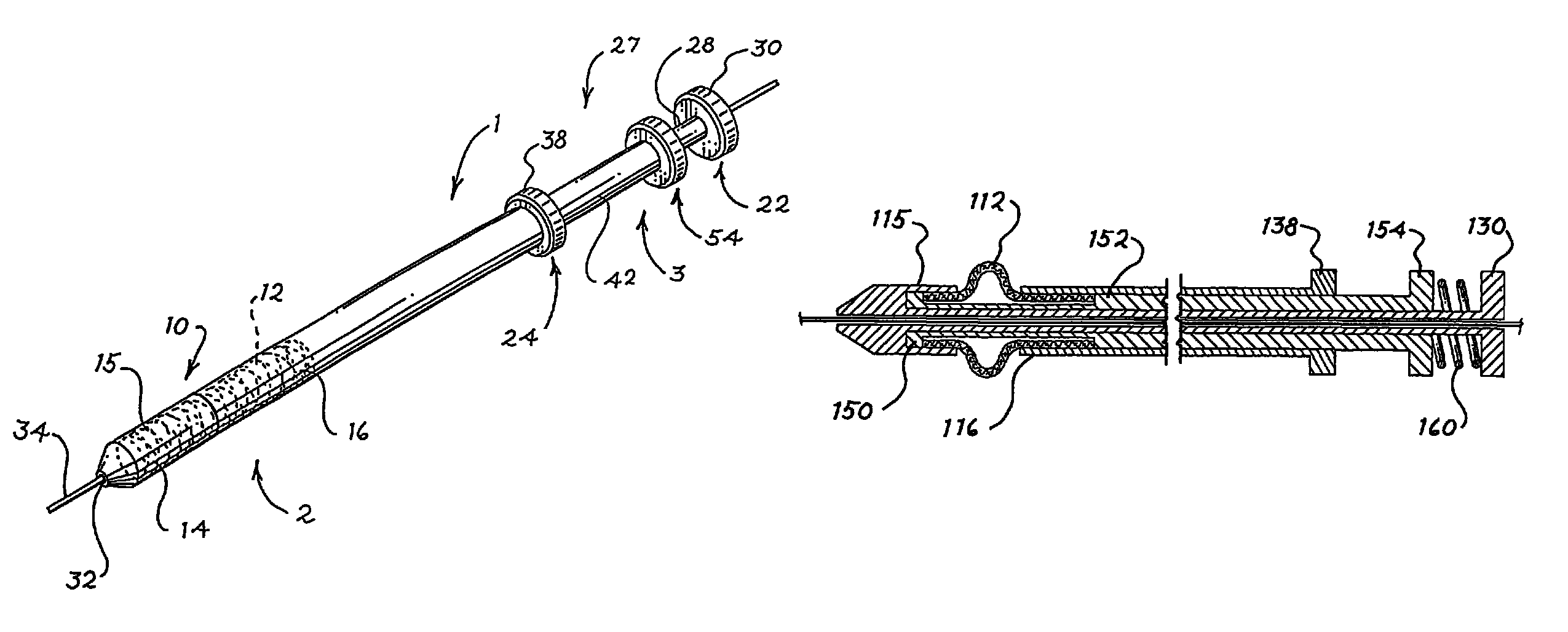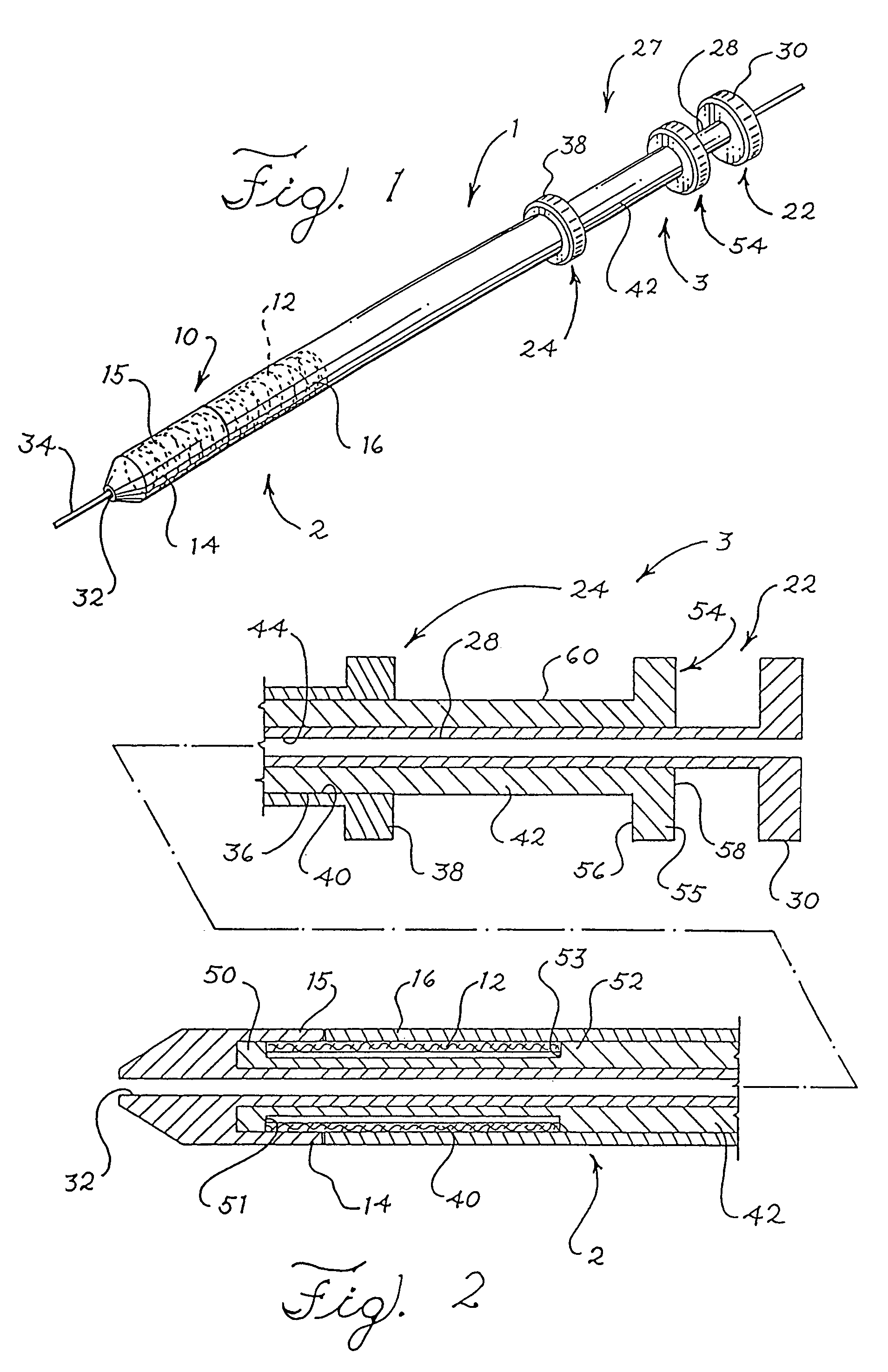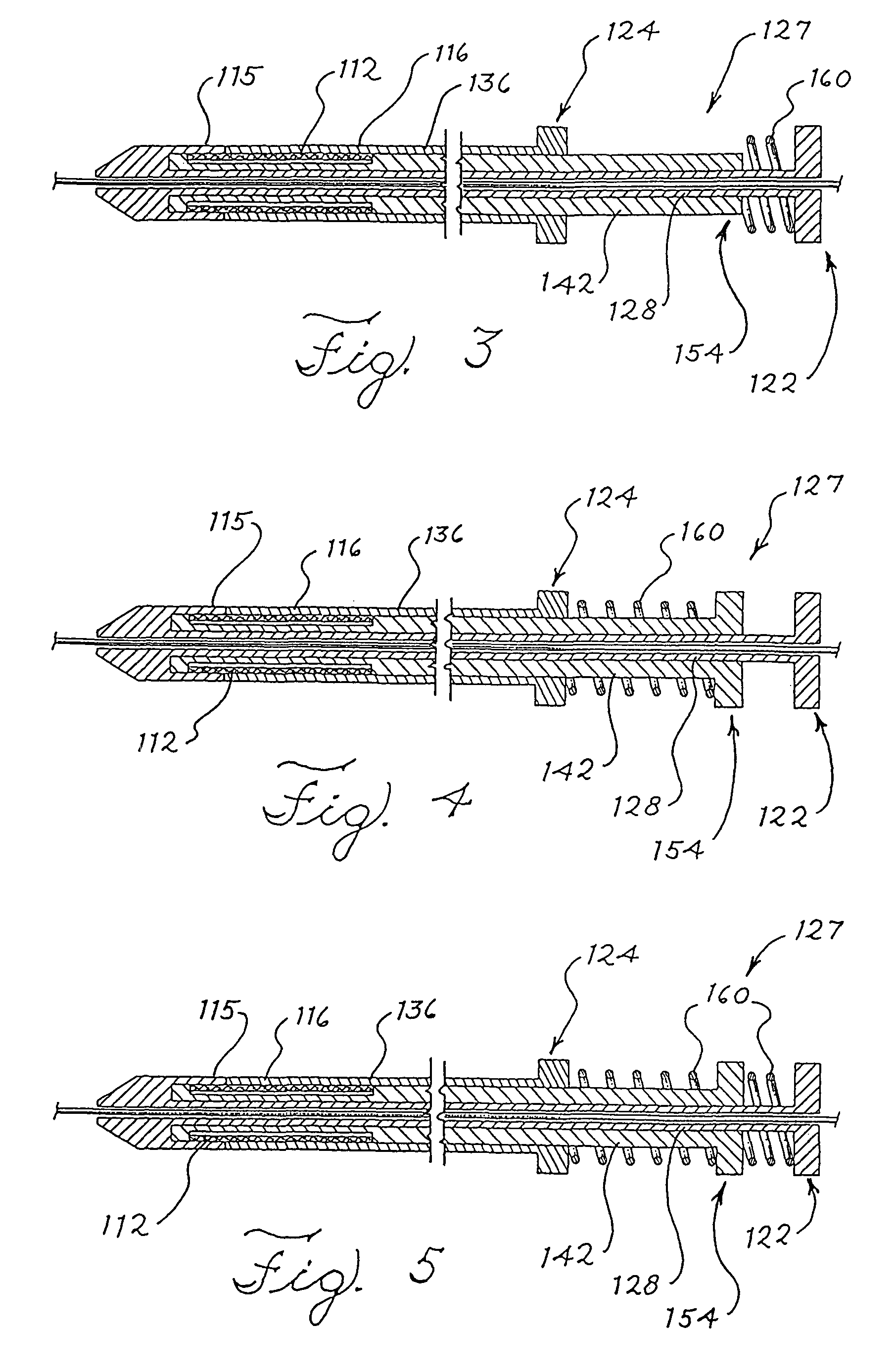Split sheath deployment system
a deployment system and split sheath technology, applied in the field of medical devices, can solve the problems of insufficient control of the operator, and insufficient control of the manner of deploymen
- Summary
- Abstract
- Description
- Claims
- Application Information
AI Technical Summary
Benefits of technology
Problems solved by technology
Method used
Image
Examples
Embodiment Construction
[0024]Throughout the specification, the terms “distal” and “distally” shall denote a position, direction, or orientation that is, or a portion of a device that, in use, is positioned generally towards the patient. Accordingly, the terms “proximal” and “proximally” shall denote a position, direction, or orientation that is, or a portion of a device that, in use, is positioned generally away from the patient.
[0025]FIG. 1 shows a prosthesis delivery and deployment device 1. The device 1 is adapted to deliver and deploy an expandable prosthesis into a body lumen (not shown) during a medical procedure and may be adapted for use to repair any damaged or diseased body lumen, including but not limited to the esophagus, the bile duct, or a blood vessel. The device 1 comprises a deployment section 2 and a user interface 3. The deployment section 2 travels through the body lumen during the procedure and delivers the prosthesis to a diseased or damaged portion thereof. The user interface 3 rema...
PUM
 Login to View More
Login to View More Abstract
Description
Claims
Application Information
 Login to View More
Login to View More - R&D
- Intellectual Property
- Life Sciences
- Materials
- Tech Scout
- Unparalleled Data Quality
- Higher Quality Content
- 60% Fewer Hallucinations
Browse by: Latest US Patents, China's latest patents, Technical Efficacy Thesaurus, Application Domain, Technology Topic, Popular Technical Reports.
© 2025 PatSnap. All rights reserved.Legal|Privacy policy|Modern Slavery Act Transparency Statement|Sitemap|About US| Contact US: help@patsnap.com



